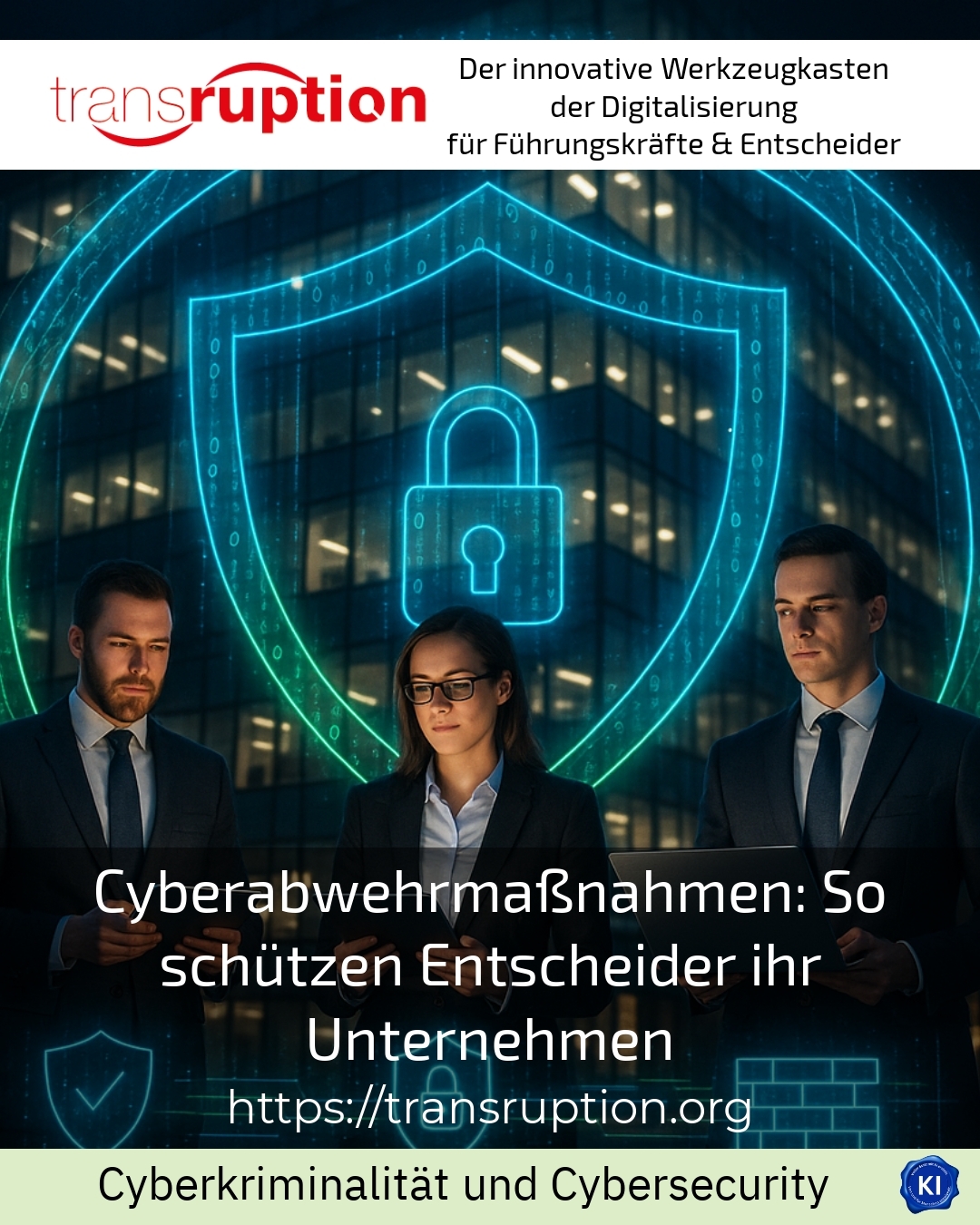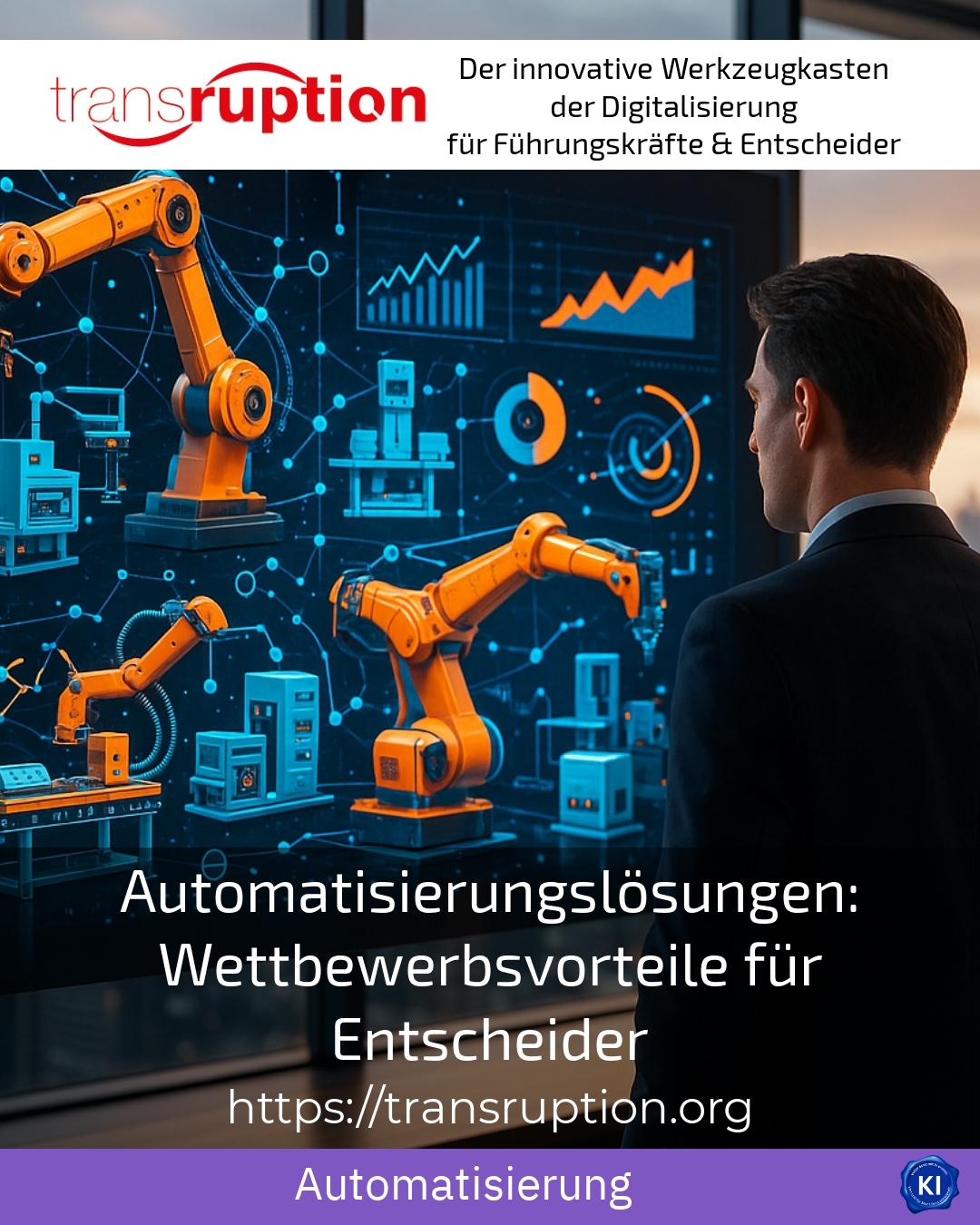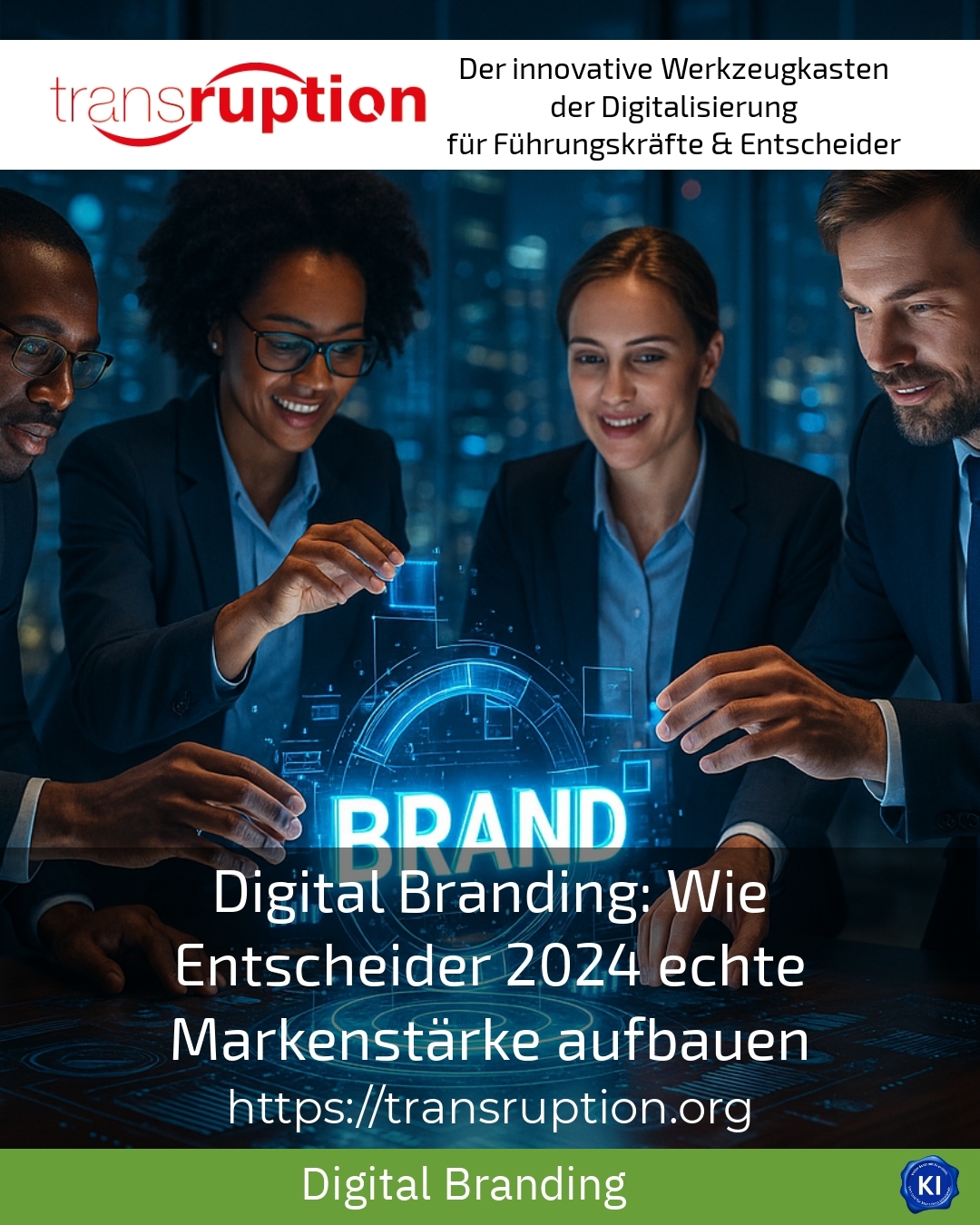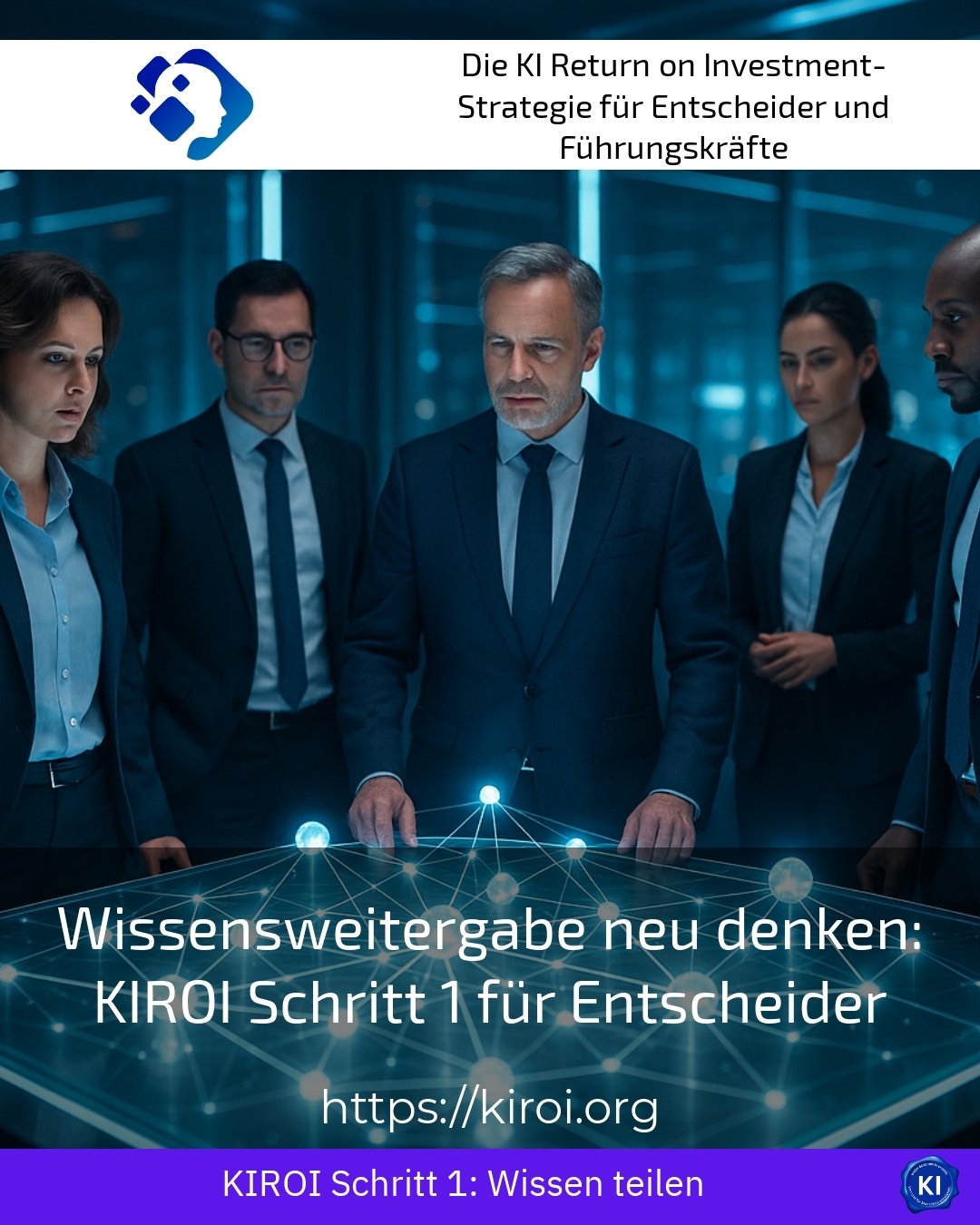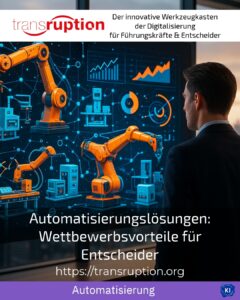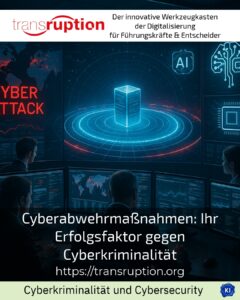Rethinking knowledge transfer is more important than ever for decision-makers today. This is because the process of systematically passing on knowledge is not simply a transfer of information, but a conscious organisation of learning and communication processes. Companies are faced with the challenge of not only preserving knowledge, but also transferring it to the right place in line with the situation and requirements. As a first step, the KIROI concept supports decision-makers in establishing sustainable and flexible solutions for knowledge transfer within the company.
Knowledge transfer: importance and challenges for decision-makers
Many companies lack a structured form of knowledge transfer. Knowledge often remains hidden in individual heads or departments. Particularly in sectors characterised by rapid change, such as technology, services and production, managers often report that valuable knowledge is lost when employees leave the company or retire. This leads to a loss of competitiveness and innovative strength.
The typical challenges of knowledge transfer include
- Finding the right formats for different teams and topics.
- The motivation of employees to actively share and pass on knowledge.
- The establishment of sustainable structures that also have a long-term impact.
- Integrate technological support and hybrid learning formats in a meaningful way.
These challenges show that it goes beyond mere documentation. The methodological diversity of knowledge transfer must be used in a targeted manner in order to meet the individual needs of the organisation.
KIROI Step 1: Providing impetus for sustainable knowledge transfer
This is precisely where the KIROI concept comes in. Decision-makers are supported in analysing the variety of methods for knowledge transfer and developing customised approaches for their company. Hybrid forms of learning play a special role here, i.e. the combination of online and face-to-face formats that reach people at different locations and with different working methods.
One focus is on motivating employees not only to retain knowledge, but also to pass it on in a situational and needs-orientated manner. External support helps to scrutinise old patterns and jointly develop new structures that are sustainable in the long term.
BEST PRACTICE with one customer (name hidden due to NDA contract) In the service area, a communication-based knowledge network was established through KIROI coaching. By analysing and adapting communication channels and using suitable tools, expert knowledge became more transparent and quicker to access, which significantly strengthened cross-departmental collaboration.
Practical examples of effective knowledge transfer in various industries
Many companies in the technology sector organise regular, practical workshops. Here, employees exchange experiences and learn about new technologies. This creates a common understanding and promotes innovation and cross-departmental collaboration.
Communication workshops are used in production companies to improve cooperation and create an atmosphere of trust. This not only increases transparency, but also trust - both important factors for sustainable knowledge transfer.
Learning tandems and mixed-age teams also show their value in service companies. Older employees pass on their experience and younger colleagues contribute their up-to-date expertise. This exchange increases employee satisfaction and opens up a wide range of new solutions.
Use a variety of methods in a targeted manner: From mentoring to digital learning platforms
For successful knowledge transfer, it is important to use different methods to suit the situation. Here are some tried and tested examples:
- Mentoring and coaching: Experienced employees support their colleagues by regularly exchanging knowledge, thereby promoting personal and professional development.
- Storytelling: Knowledge is conveyed more vividly and memorably through lively stories. This promotes the learning process and the lasting memory of content.
- Digital learning platforms: E-learning supports learning independent of time and place, so that knowledge content can be imparted flexibly.
- Workshops and training courses: They create space for dialogue, reduce fear of contact and promote an open learning culture.
The combination of these methods in a hybrid learning format in particular makes it possible to reach people more effectively and motivate them to actively pass on knowledge.
Another important point is the conscious handling of implicit knowledge - i.e. undocumented experiential knowledge. Formats such as learning tandems or coaching help here because they promote personal exchange.
Knowledge transfer as a strategic task for decision-makers
Decision-makers are called upon to create a framework in which knowledge transfer becomes a matter of course. This includes, for example
- The development of customised knowledge management processes that meet the requirements of the respective industry and company size.
- Creating a culture in which learning and sharing are seen as valuable and actively encouraged.
- The integration of technological tools that facilitate the exchange of knowledge and make it transparent.
- Continuous reflection on existing processes in order to evaluate experiences and optimise structures.
This enables companies to react flexibly to changes and benefit from the collective intelligence of their employees in the long term.
My analysis
Knowledge transfer is more than a purely technical process. It requires a rethink towards a conscious organisation of learning and communication processes. KIROI offers valuable impulses for decision-makers to develop customised and sustainable solutions. The combination of diverse methods - from mentoring and storytelling to hybrid learning formats - makes it possible to share knowledge effectively and thus strengthen innovation and collaboration within the company. Decision-makers should recognise knowledge sharing as a strategic task in order to promote a sustainable learning culture.
Further links from the text above:
Mastering knowledge transfer: KIROI Step 1 for decision-makers
Knowledge transfer | Definition, methods & examples - persomatch
Knowledge transfer methods: Success strategies for companies
Knowledge transfer methods: Strategies for securing knowledge
Knowledge management: definition, methods and tools for effective corporate management
For more information and if you have any questions, please contact Contact us or read more blog posts on the topic Artificial intelligence here.

